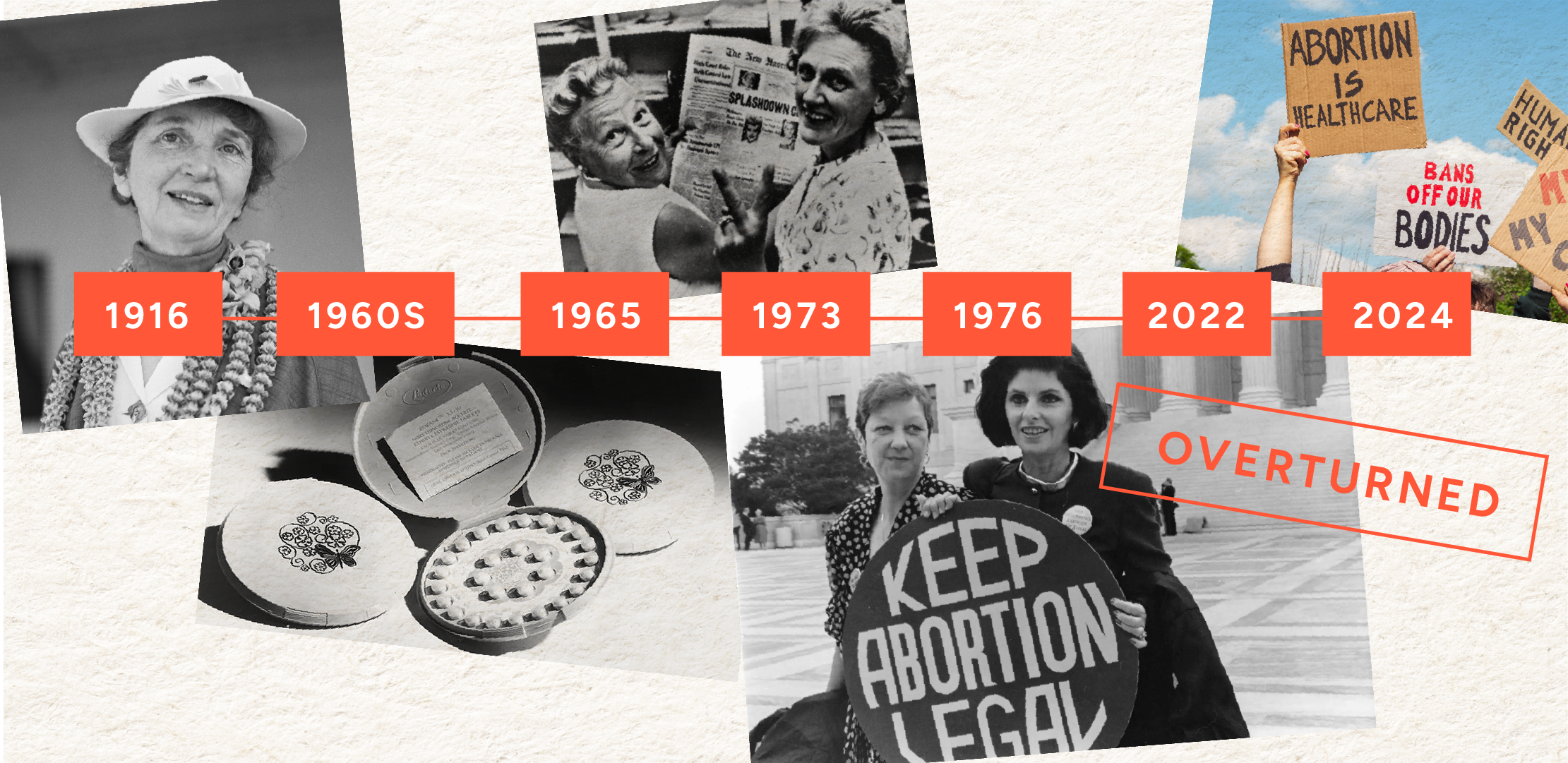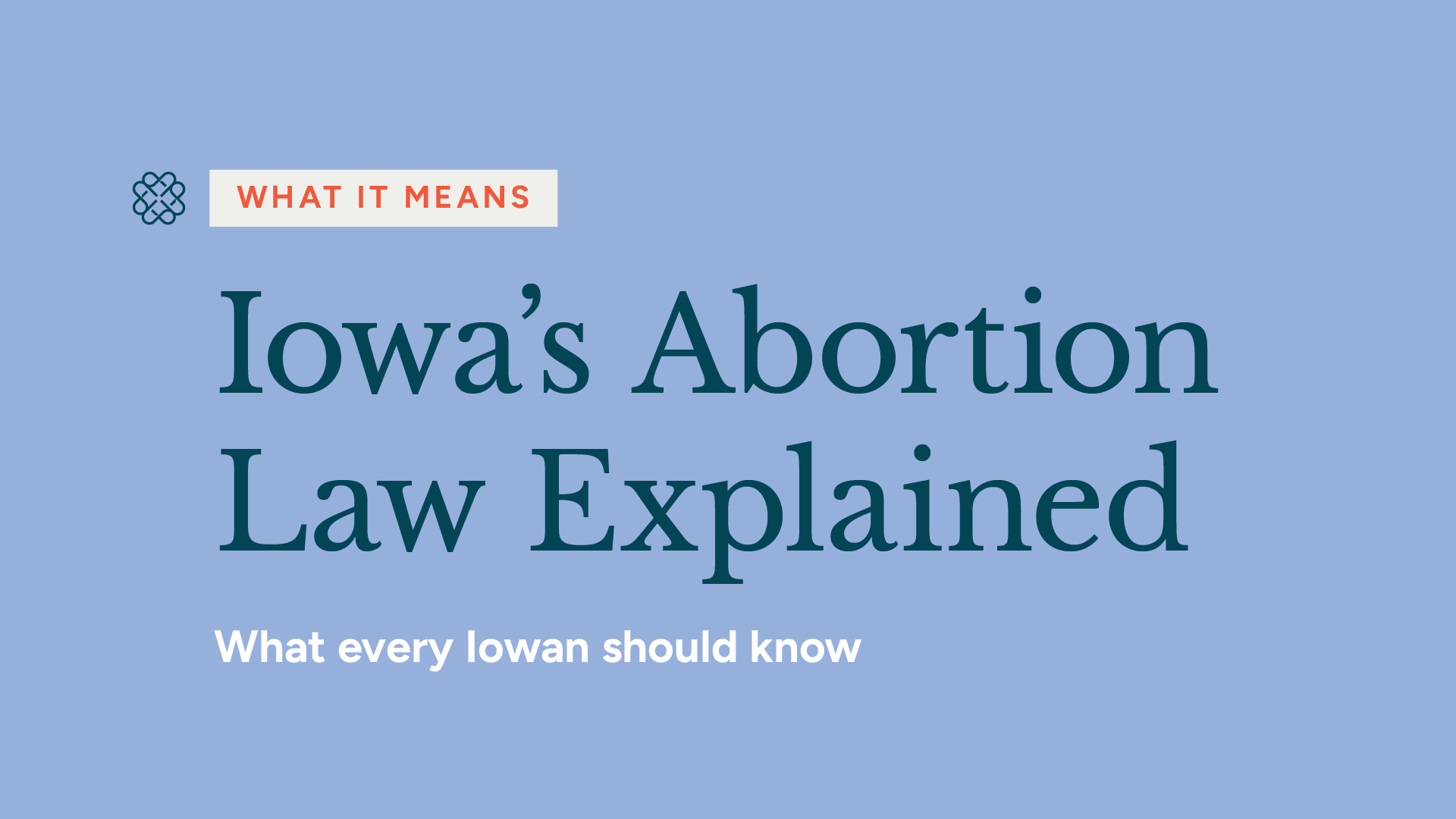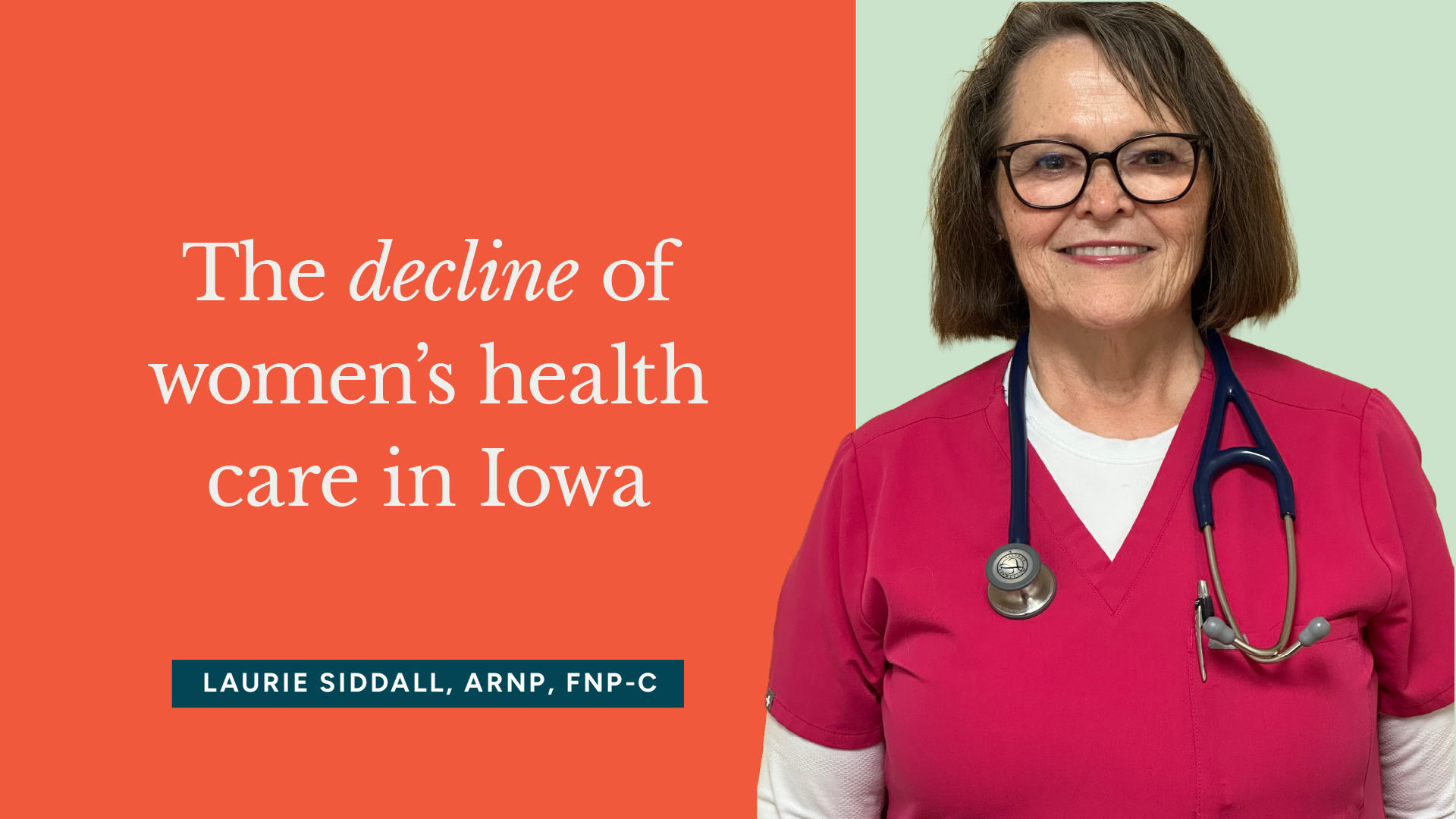
From the first birth control clinic in 1916 to today’s debates about reproductive autonomy, the history of women’s healthcare in America is one of courage, innovation, and continuous resistance.
Each milestone tells part of a larger story. One that connects birth control, abortion, and bodily autonomy to the broader fight for equality and healthcare access. Understanding where we’ve come from helps explain where we are now and why protecting these rights still matters.

1916 — The First Birth Control Clinic Opens
In 1916, nurse and activist Margaret Sanger opened the nation’s first birth control clinic in Brooklyn, New York.
At the time, even discussing contraception was considered “obscene” under federal law. Sanger was arrested within days, but her act of defiance sparked the modern birth control movement.
Her work led to the founding of what would later become Planned Parenthood, and set the foundation for women’s control over their own reproductive lives.
This early push for contraceptive access marked a turning point for women’s health and autonomy. It demonstrated that access to birth control isn’t just a medical issue, it’s a matter of freedom and equality.

1960–1964 — Scientific Breakthroughs: The Pill and the IUD
Decades of activism paved the way for science to deliver new options.
- 1960: The FDA approved Enovid, the first oral contraceptive pill
- 1964: The first intrauterine device (IUD) became available in the U.S.
For the first time in history, women had reliable, private tools to prevent pregnancy and plan their futures. This new control over timing and family size had ripple effects, shaping education, careers, and gender equality.
Access to effective contraception became one of the most powerful tools for gender equality and personal freedom in modern history.
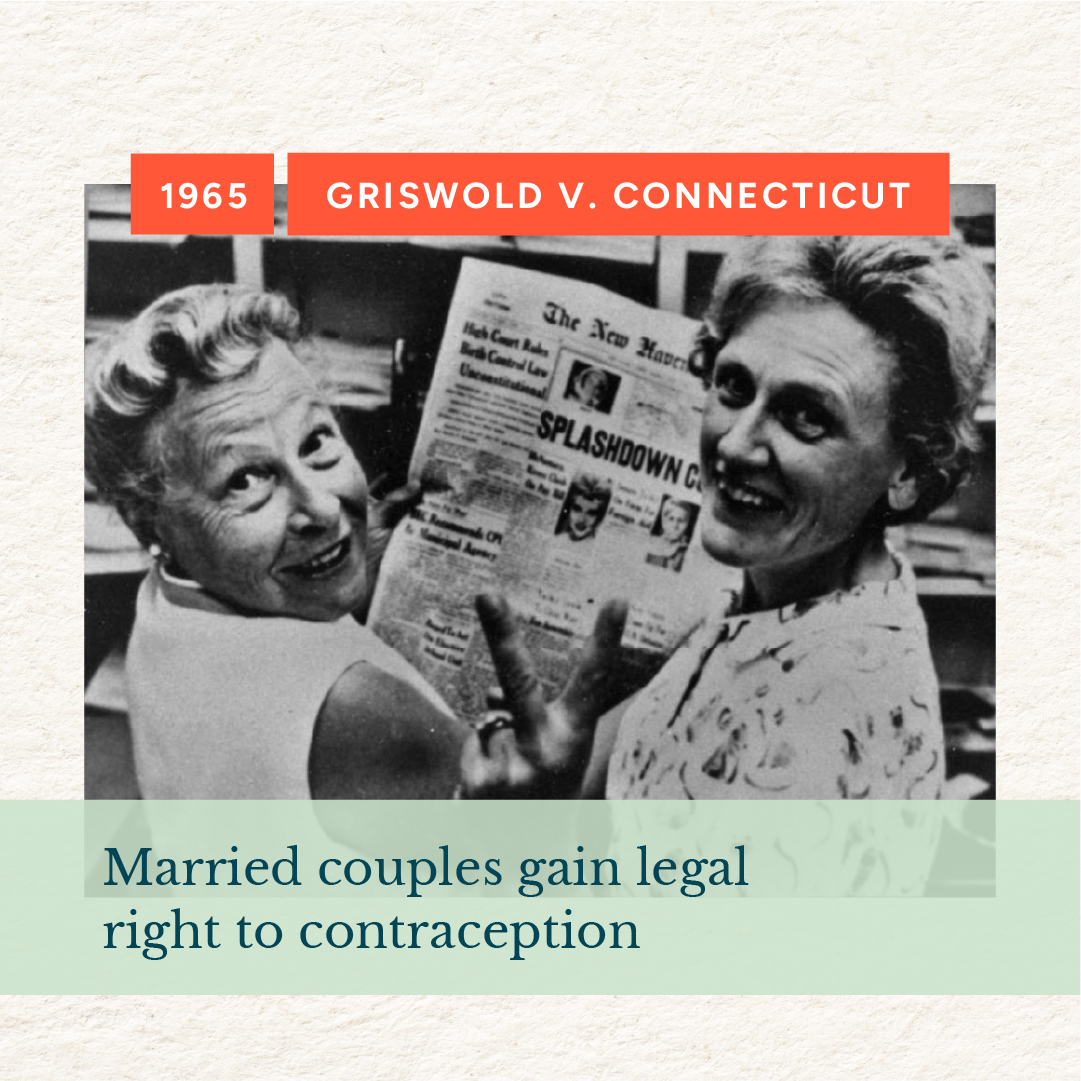
1965 — Married Couples Gain Legal Right to Contraception
The Supreme Court’s decision in Griswold v. Connecticut recognized a constitutional “right to privacy” in marital relations, striking down state laws that banned birth control, even for married couples.
This case was the first to legally connect reproductive decisions to privacy, creating a foundation for future rights-based rulings.
1972 — Unmarried People Gain Equal Access to Birth Control
In Eisenstadt v. Baird, the Supreme Court extended the right to contraception to unmarried individuals.
The case began after activist Bill Baird was arrested for giving contraceptives to an unmarried woman during a lecture in Massachusetts.
The Court ruled that restricting contraceptives to married couples violated the Equal Protection Clause of the Fourteenth Amendment.
For the first time, all adults, married or not, had the legal right to access contraception. The decision affirmed that reproductive choice is a personal liberty, not one granted by marital status.
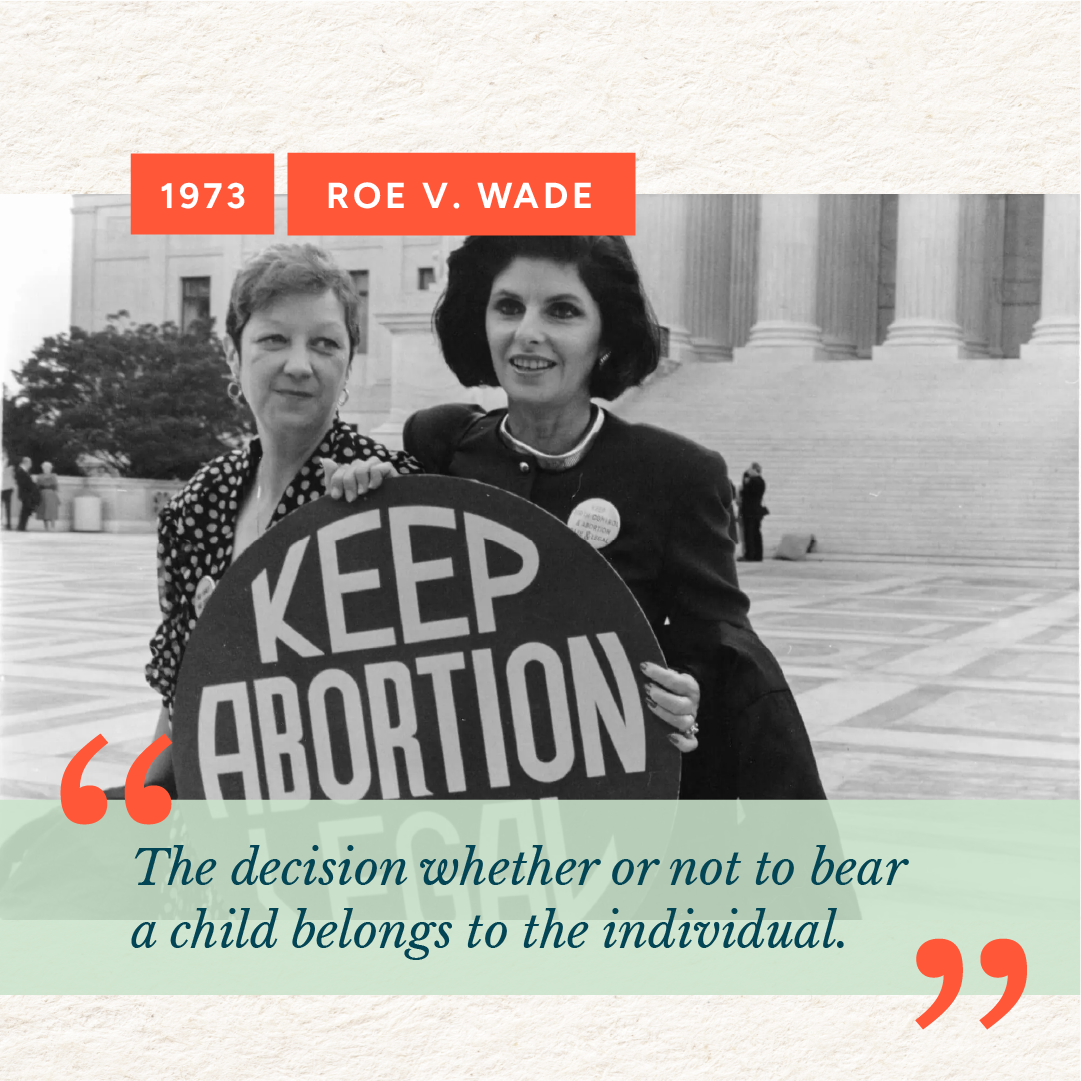
1973 — Roe v. Wade Legalizes Abortion Nationwide
Just one year later, the Supreme Court issued its landmark ruling in Roe v. Wade, recognizing the constitutional right to abortion under the right to privacy.
The decision legalized abortion nationwide and set a precedent that balanced personal autonomy with state interests.
For nearly 50 years, Roe protected access to safe, legal abortion, enabling people to make private medical decisions with their doctors rather than politicians.
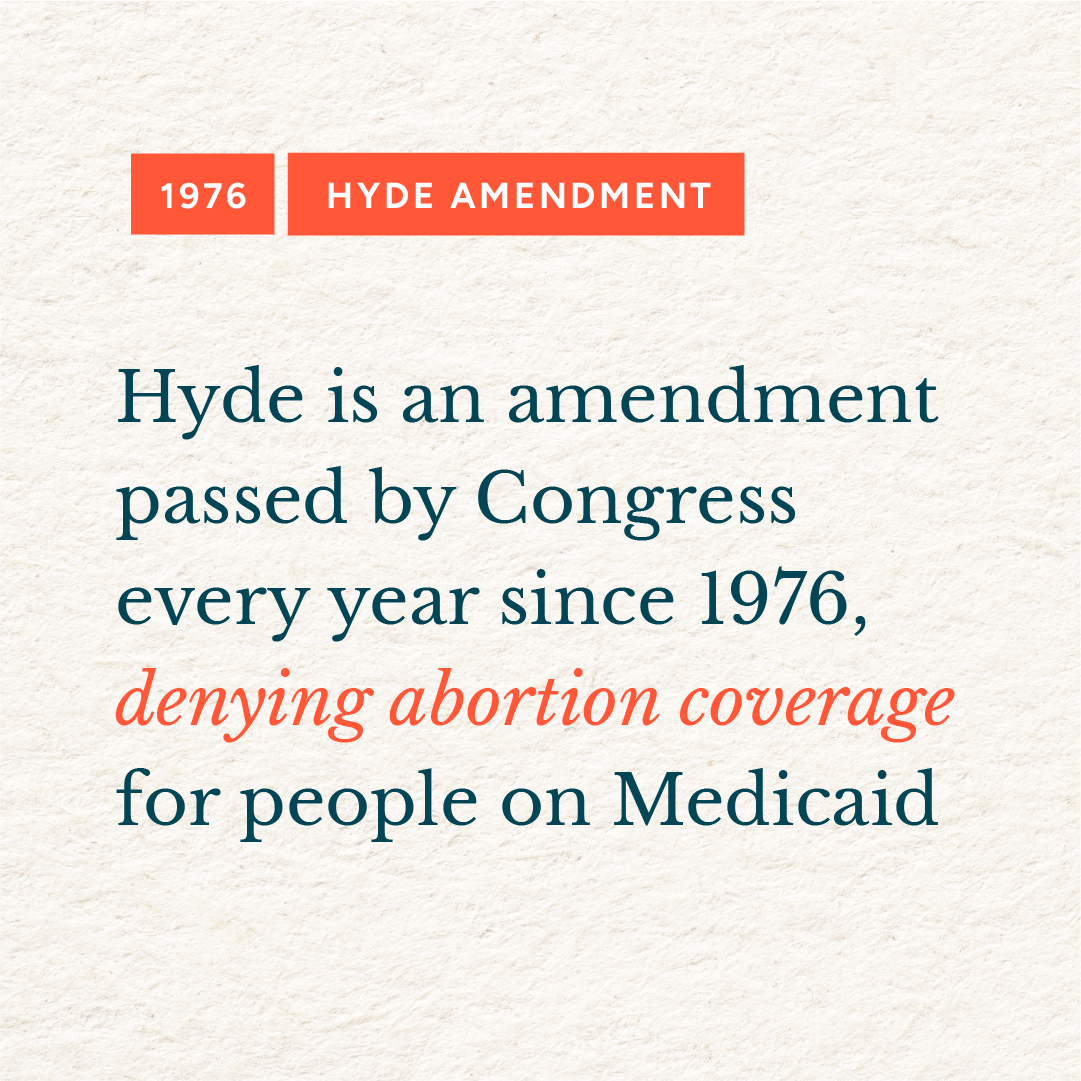
1976 — The Hyde Amendment Limits Abortion Funding
Just three years after Roe, Congress passed the Hyde Amendment, which prohibited most federal funds from being used for abortion services.
This meant that individuals on Medicaid, disproportionately low-income women and women of color, were suddenly denied coverage for abortion care.
The Hyde Amendment didn’t make abortion illegal, but it made it inaccessible for many. It created a two-tier system: abortion for those who could afford it, and forced continuation of pregnancy for those who couldn’t.
The policy remains in effect today.
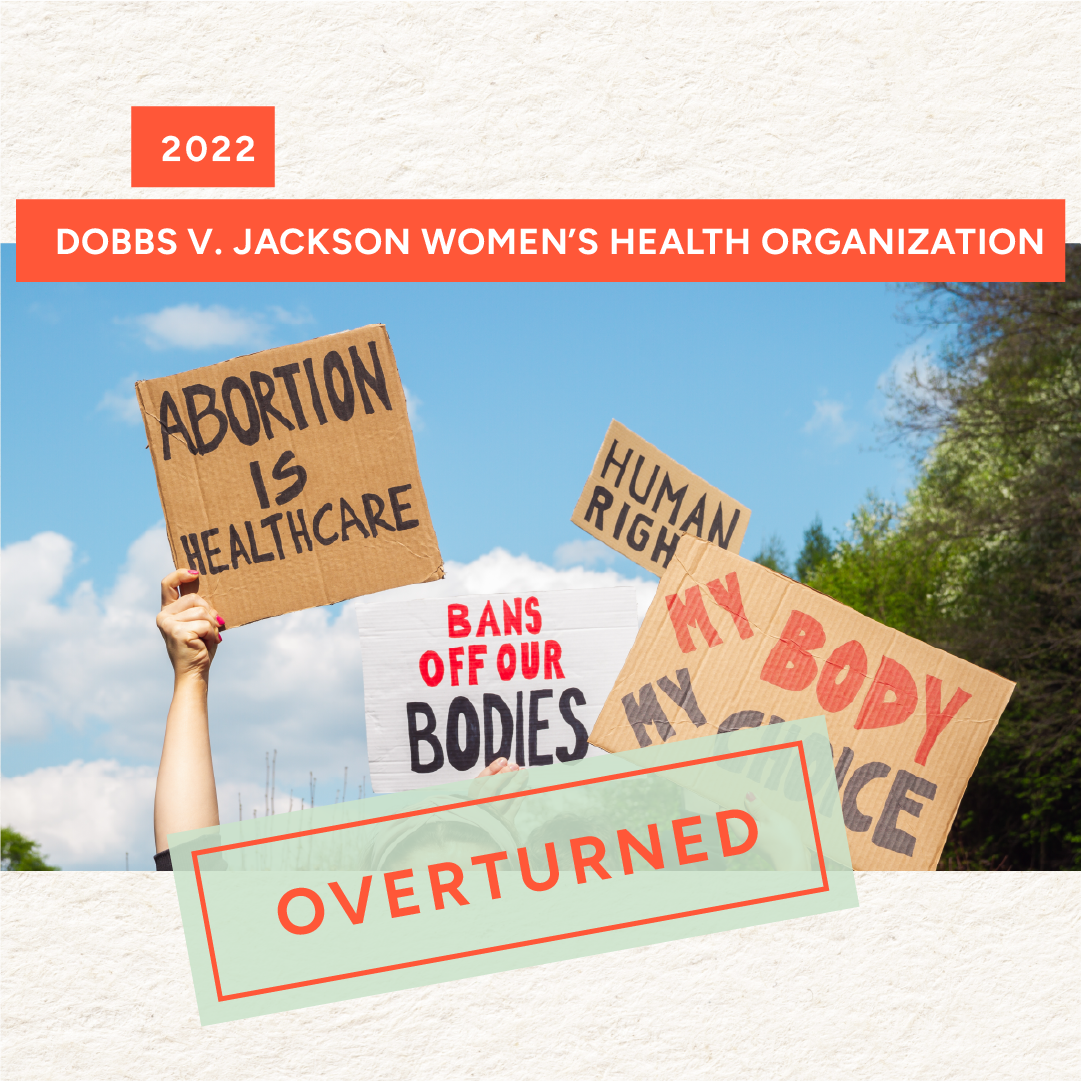
2022 — Roe v. Wade Is Overturned
In 2022, the Supreme Court’s decision in Dobbs v. Jackson Women’s Health Organization overturned Roe v. Wade, ending the federal right to abortion.
The ruling returned control to individual states, and within weeks, dozens enacted bans or severe restrictions. Millions of Americans suddenly lost access to essential healthcare, including emergency and miscarriage care.
Dobbs represents one of the most significant rollbacks of personal liberty in U.S. history. It has deepened health inequities, especially for people in rural areas, people of color, and those with limited means.
2024 — New Threats to Birth Control Access
In late 2024, efforts to expand no-cost contraceptive coverage under the Affordable Care Act were rolled back at the federal level.
These policy reversals weakened protections for millions of people who rely on employer-based health insurance to access birth control.
Even as abortion access erodes, birth control remains under political scrutiny. The ongoing attempts to restrict contraceptive coverage show that reproductive freedom, in all its forms, requires constant defense.
A Century of Progress and Pushback
The history of reproductive healthcare in America is not a straight line of progress, it’s a cycle of advancement and restriction. Every gain in access was hard-won through activism, legal battles, and public awareness. And each setback reminds us that rights are not self-preserving, they require vigilance, education, and unity. Reproductive freedom isn’t about ideology. It’s about autonomy, safety, and the right to make private medical decisions free from political interference. By understanding this history, we empower ourselves and our communities to protect the future of healthcare access for everyone.
Source Links
- “The History & Impact of Planned Parenthood” – October 16, 1916 clinic in Brooklyn
- “First American Birth Control Clinic (The Brownsville Clinic), 1916” – detailed history
- “Biography: Margaret Sanger (1879-1966)” – summary of Sanger’s work
- “Birth Control Movement in the United States: 1912-1960” – broader context
- FDA – Approval of the First Oral Contraceptive
For more reproductive rights information and updates on Iowa healthcare access, visit our resources page or sign up for our newsletter.
Empower change.
Sign up for our newsletter and stay informed on reproductive healthcare issues in Iowa.

